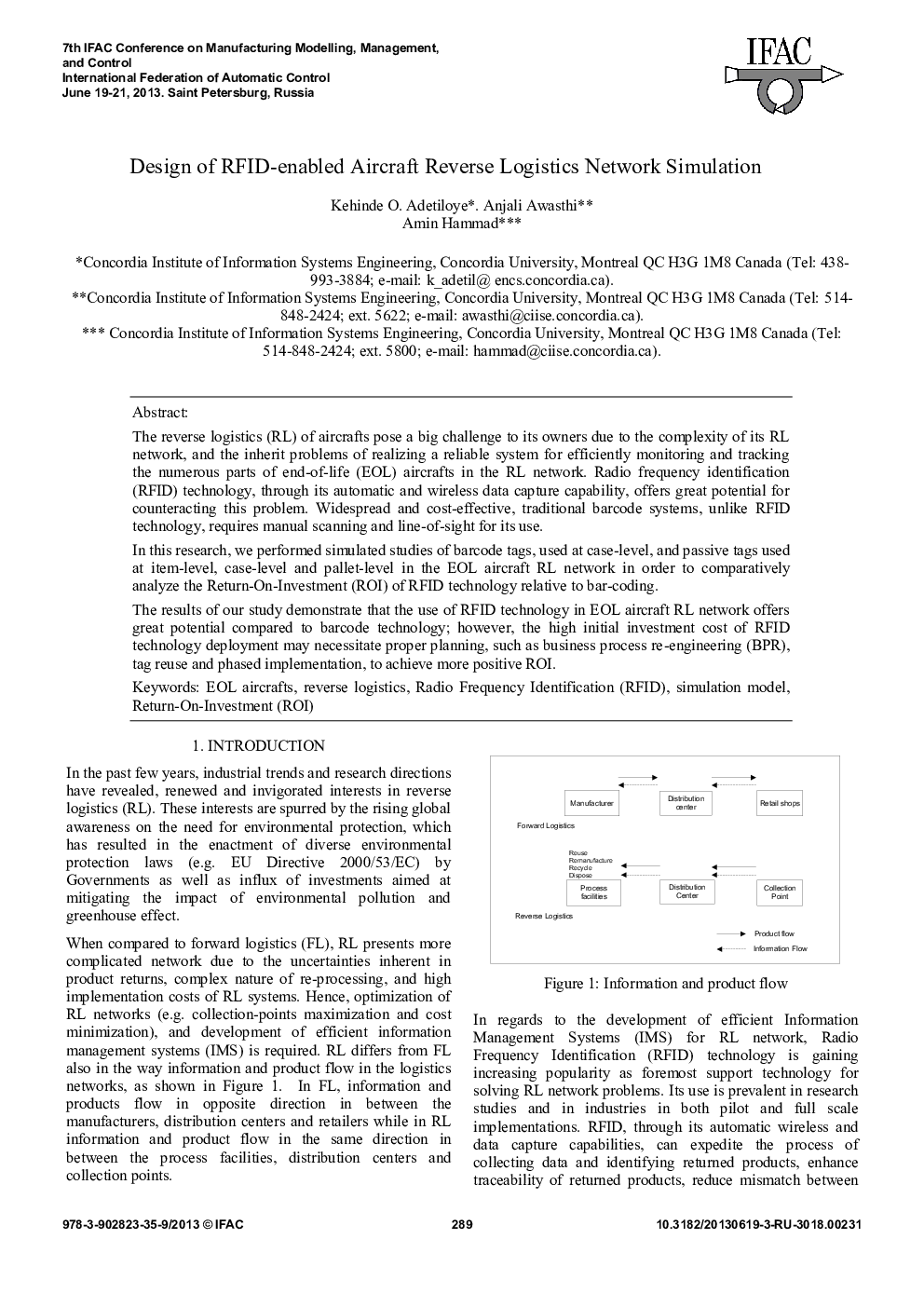| Article ID | Journal | Published Year | Pages | File Type |
|---|---|---|---|---|
| 715165 | IFAC Proceedings Volumes | 2013 | 6 Pages |
The reverse logistics (RL) of aircrafts pose a big challenge to its owners due to the complexity of its RL network, and the inherit problems of realizing a reliable system for efficiently monitoring and tracking the numerous parts of end-of-life (EOL) aircrafts in the RL network. Radio frequency identification (RFID) technology, through its automatic and wireless data capture capability, offers great potential for counteracting this problem. Widespread and cost-effective, traditional barcode systems, unlike RFID technology, requires manual scanning and line-of-sight for its use. In this research, we performed simulated studies of barcode tags, used at case-level, and passive tags used at item-level, case-level and pallet-level in the EOL aircraft RL network in order to comparatively analyze the Return-On-Investment (ROI) of RFID technology relative to bar-coding. The results of our study demonstrate that the use of RFID technology in EOL aircraft RL network offers great potential compared to barcode technology; however, the high initial investment cost of RFID technology deployment may necessitate proper planning, such as business process re-engineering (BPR), tag reuse and phased implementation, to achieve more positive ROI.
